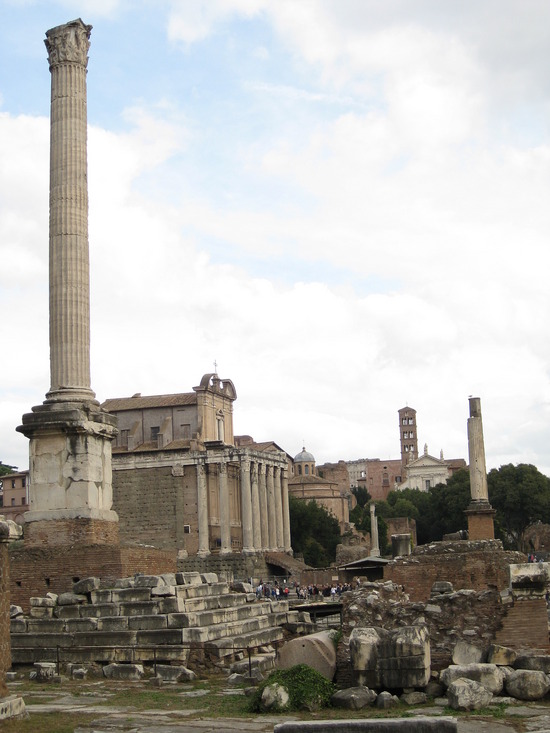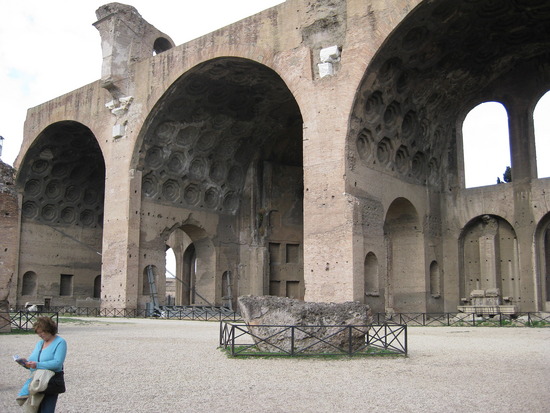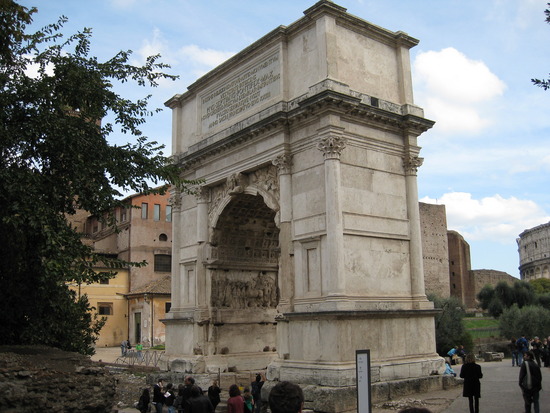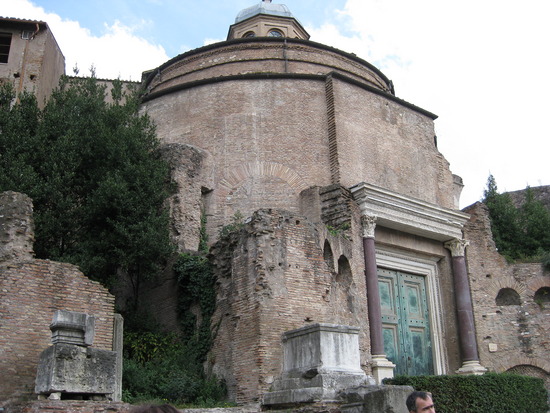Profile
Blog
Photos
Videos
Travel Blog of the Gaps
Ancient Rome's legacy permeates this city, but nowhere does it feel more interactive than at the Pantheon.
This round, domed temple is a masterpiece of architectural symmetry and engineering. The original was constructed in the first century B.C.E., but Emperor Hadrian had it rebuilt in 126 C.E. for public worship of all the Roman Gods. ("Pan-theon" is a Greek term meaning "all the gods.") Since 609 C.E., it has served as a Christian church. Thus, because of this unbroken lineage of use, the Pantheon is the oldest, continuously used building in the world.
The structure's 40-foot portal columns of solid granite were harvested from an Egyptian temple and shipped to Rome specifically for the Pantheon. And although they are impressive, what attracts the most attention is the dome.
The Ancient Romans perfected the construction of domed buildings, and none better displays this art than the Pantheon. Its proportions are perfect. The dome is as high as it is wide. Its heft is carried by a 20-foot-thick cylindrical wall. The weight of the roof is reduced by hollowed squares in the ceiling, and the ceiling's thickness tapers as it approaches the apex. Michelangelo took all this ancient Roman achievement as inspiration for his design of the dome of St. Peter's Basilica.
Inside the ancient Roman idols have been supplanted by statues of saints, martyrs, and the crypts of a few notable Italians: Raphael the painter and the first two kings of a united Italy: Victor Emmanuel II and Umberto I.
Outside the Pantheon's entrance sits a delightful piazza containing a fountain, that is itself topped by an Egyptian obelisk. The piazza is surrounded by a variety of mid-range shops and restaurants. (Unfortunately, a McDonald's is among them.)
Rome is a sprawling city, but in this square, it feels more easily contained. Although the city's history is enormously complex, here one building holds the legacy of Ancient, Medieval, Renaissance, Baroque, Enlightenment, Industrial, and Modern Rome. It serves as a bookmark that helps us note both where we've come and where we've been. And it has become one of my favorite sites in Rome.
This round, domed temple is a masterpiece of architectural symmetry and engineering. The original was constructed in the first century B.C.E., but Emperor Hadrian had it rebuilt in 126 C.E. for public worship of all the Roman Gods. ("Pan-theon" is a Greek term meaning "all the gods.") Since 609 C.E., it has served as a Christian church. Thus, because of this unbroken lineage of use, the Pantheon is the oldest, continuously used building in the world.
The structure's 40-foot portal columns of solid granite were harvested from an Egyptian temple and shipped to Rome specifically for the Pantheon. And although they are impressive, what attracts the most attention is the dome.
The Ancient Romans perfected the construction of domed buildings, and none better displays this art than the Pantheon. Its proportions are perfect. The dome is as high as it is wide. Its heft is carried by a 20-foot-thick cylindrical wall. The weight of the roof is reduced by hollowed squares in the ceiling, and the ceiling's thickness tapers as it approaches the apex. Michelangelo took all this ancient Roman achievement as inspiration for his design of the dome of St. Peter's Basilica.
Inside the ancient Roman idols have been supplanted by statues of saints, martyrs, and the crypts of a few notable Italians: Raphael the painter and the first two kings of a united Italy: Victor Emmanuel II and Umberto I.
Outside the Pantheon's entrance sits a delightful piazza containing a fountain, that is itself topped by an Egyptian obelisk. The piazza is surrounded by a variety of mid-range shops and restaurants. (Unfortunately, a McDonald's is among them.)
Rome is a sprawling city, but in this square, it feels more easily contained. Although the city's history is enormously complex, here one building holds the legacy of Ancient, Medieval, Renaissance, Baroque, Enlightenment, Industrial, and Modern Rome. It serves as a bookmark that helps us note both where we've come and where we've been. And it has become one of my favorite sites in Rome.
- comments











Richard Nault I have deposited the "T" at the bus satation so he is on his way!!! Need you to come back early to "Host"..!!Nice reports.
T Good gracious - how do you find the time to do all that writing?See you in Cairo!T.
Kyle Enjoying the posts, Larry. I hope you're having a great time!
anna Great stories and photos! Can't wait for the next installment.